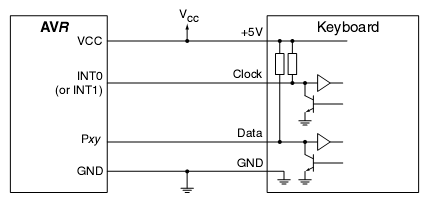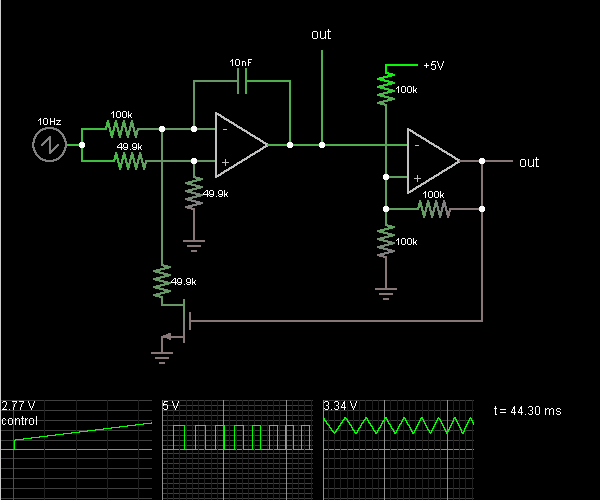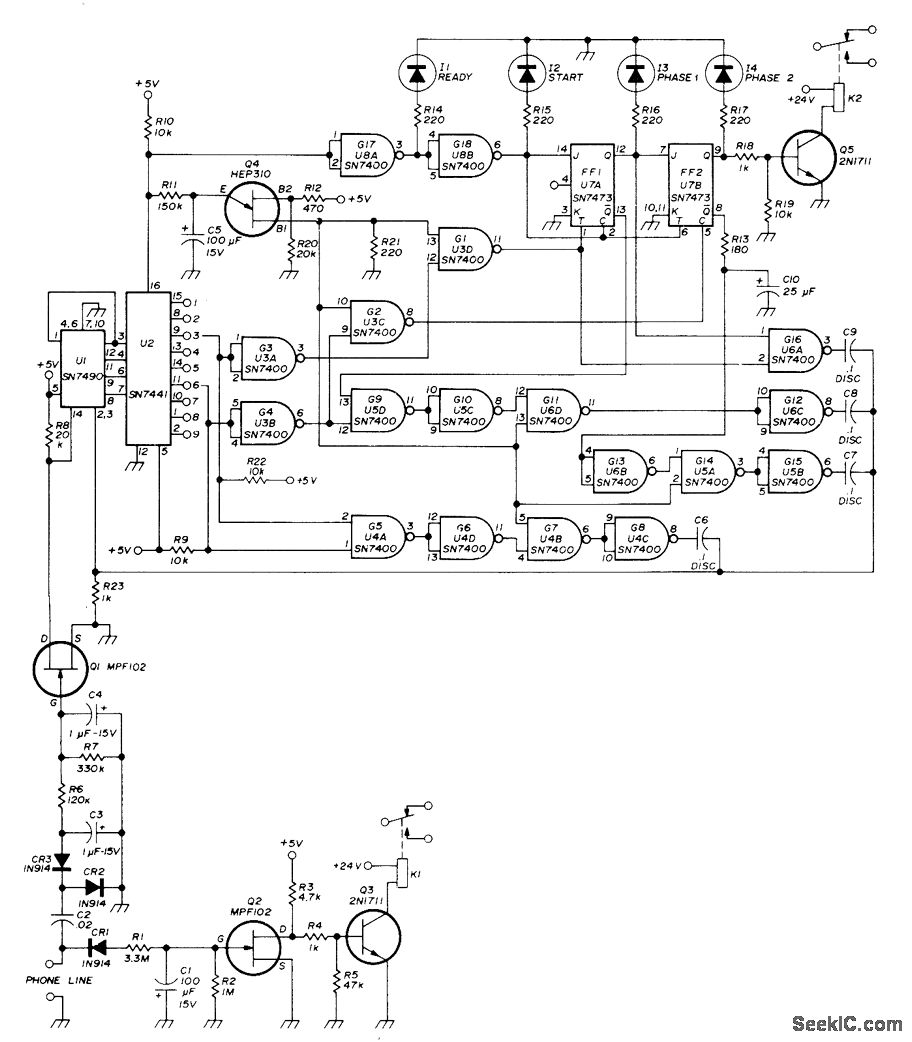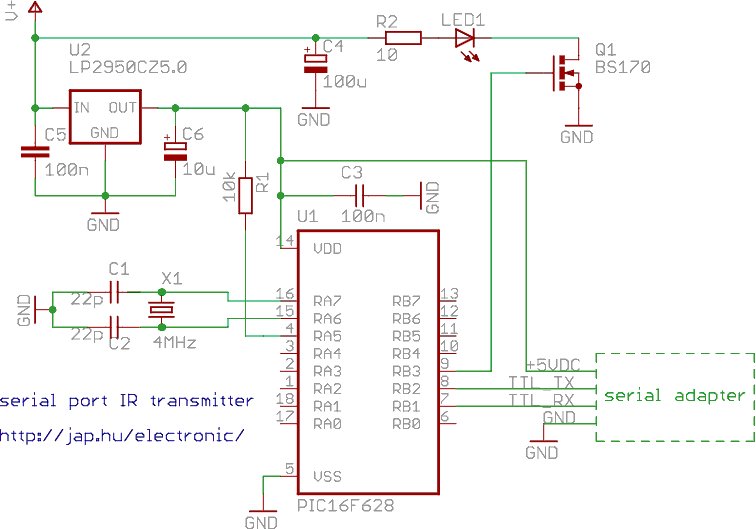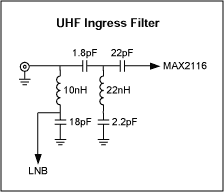
MAGNETOSTRICTION TV REMOTE CONTROL
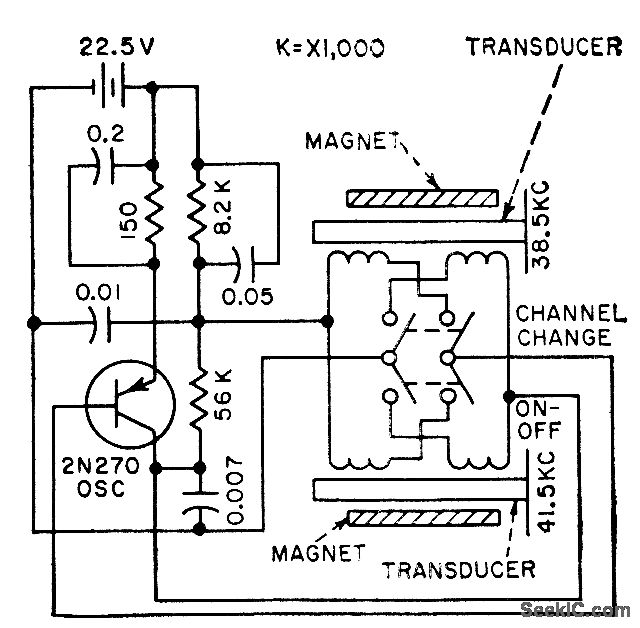
The frequency of a transistor oscillator is regulated by two different lengths of nickel tubing, each containing two coil windings. One coil functions as a driver, while the other serves as a pickup to generate feedback voltage necessary for maintaining oscillation at control frequencies of 38.5 kHz and 41.5 kHz. Aluminum diaphragms located at the front ends of the tubing enhance acoustic output.
The described transistor oscillator circuit employs a feedback mechanism to achieve stable oscillations at specified frequencies. The oscillator consists of a transistor, which amplifies the signal generated by the coils. The two lengths of nickel tubing are crucial as they allow for the adjustment of the resonant frequency based on their physical dimensions. The driver coil generates an initial oscillating signal, while the pickup coil captures a portion of this signal, providing feedback to sustain oscillation.
The use of aluminum diaphragms at the ends of the tubing serves a dual purpose. Firstly, they act as acoustic transducers, converting electrical energy into sound waves, thereby improving the output efficiency of the oscillator. Secondly, the diaphragms can enhance the frequency response of the system, allowing for clearer and more defined ultrasonic tones.
In practical applications, the oscillator can be utilized in various electronic devices requiring precise frequency control, such as in ultrasonic cleaning equipment or in selective television channel tuning systems, as referenced in the literature. The ability to switch between two frequencies enables versatility in operation, catering to different operational needs or environmental conditions. Proper design considerations, including the selection of suitable transistor types and coil specifications, are essential for optimizing performance in specific applications.Frequency of transistor oscillator is controlled by either of two lengths of nickel tubing, each looting inside form having two coil windings. One coil acts as driver and the other as pickup to provide feedback voltage for sustaining oscillation at control frequencies of 38.
5 and 41. 5 kc. Aluminum diaphragms on front ends of tubing increase acoust ic output. -N. Frihart and J. Krakora, Ultrasonic Tones Select Tv Channels, Electronics, 31 :23, p 68-69. 🔗 External reference
The described transistor oscillator circuit employs a feedback mechanism to achieve stable oscillations at specified frequencies. The oscillator consists of a transistor, which amplifies the signal generated by the coils. The two lengths of nickel tubing are crucial as they allow for the adjustment of the resonant frequency based on their physical dimensions. The driver coil generates an initial oscillating signal, while the pickup coil captures a portion of this signal, providing feedback to sustain oscillation.
The use of aluminum diaphragms at the ends of the tubing serves a dual purpose. Firstly, they act as acoustic transducers, converting electrical energy into sound waves, thereby improving the output efficiency of the oscillator. Secondly, the diaphragms can enhance the frequency response of the system, allowing for clearer and more defined ultrasonic tones.
In practical applications, the oscillator can be utilized in various electronic devices requiring precise frequency control, such as in ultrasonic cleaning equipment or in selective television channel tuning systems, as referenced in the literature. The ability to switch between two frequencies enables versatility in operation, catering to different operational needs or environmental conditions. Proper design considerations, including the selection of suitable transistor types and coil specifications, are essential for optimizing performance in specific applications.Frequency of transistor oscillator is controlled by either of two lengths of nickel tubing, each looting inside form having two coil windings. One coil acts as driver and the other as pickup to provide feedback voltage for sustaining oscillation at control frequencies of 38.
5 and 41. 5 kc. Aluminum diaphragms on front ends of tubing increase acoust ic output. -N. Frihart and J. Krakora, Ultrasonic Tones Select Tv Channels, Electronics, 31 :23, p 68-69. 🔗 External reference
Warning: include(partials/cookie-banner.php): Failed to open stream: Permission denied in /var/www/html/nextgr/view-circuit.php on line 713
Warning: include(): Failed opening 'partials/cookie-banner.php' for inclusion (include_path='.:/usr/share/php') in /var/www/html/nextgr/view-circuit.php on line 713
